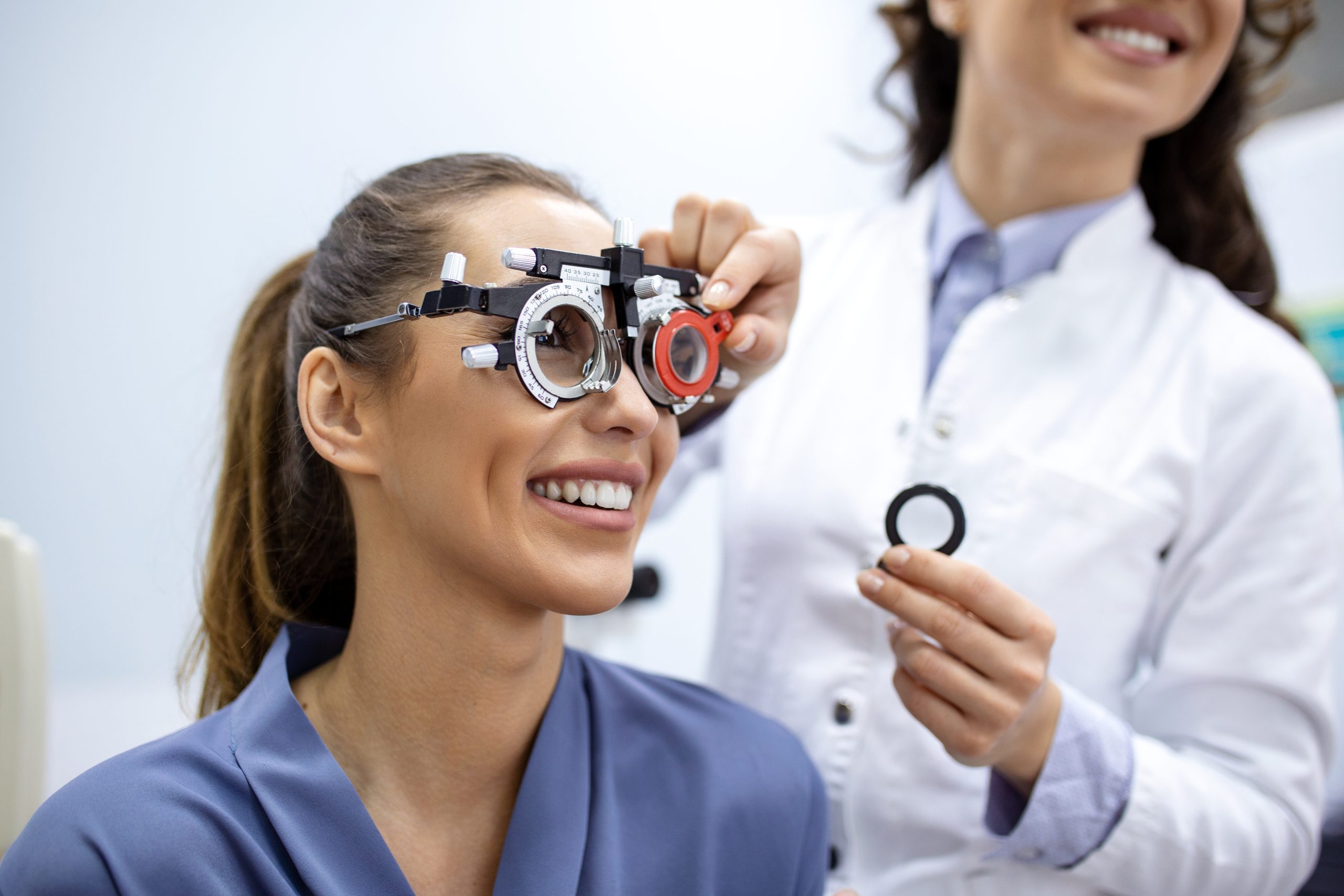Why Picking an Eye Doctor Optometrist is Important for Your Eyes
Exploring the most up to date Technological Improvements in Optometry and What They Mean for Optometrists
In the ever-evolving area of optometry, current technological innovations are reshaping how specialists come close to eye treatment. From the precision of Optical Coherence Tomography to the nuanced insights used by AI-driven analysis tools, these advancements are setting new requirements in client analysis and therapy. Teleoptometry is positioned to redefine ease of access, guaranteeing that knowledge transcends geographical limitations. As these improvements penetrate the practice, eye doctors are confronted with the obstacle of accepting these tools to boost client results. The concern remains: exactly how will these technological shifts redefine the duties and responsibilities within the career?
Developments in Diagnostic Tools
Progressing the field of optometry, developments in diagnostic tools have actually changed the way eye treatment specialists analyze and diagnose visual problems and eye problems. The previous decade has witnessed considerable technological advancements, making it possible for even more precise and detailed analyses. Optical Comprehensibility Tomography (OCT), for example, provides high-resolution cross-sectional images of the retina, permitting for the very early discovery of diseases such as glaucoma and age-related macular degeneration. This non-invasive imaging strategy has come to be crucial in contemporary optometric practice.
Another key technology is the introduction of innovative corneal topography systems, which map the surface area curvature of the cornea with precision. These devices are especially helpful for fitting call lenses and detecting corneal problems. Electronic retinal imaging has transformed conventional ophthalmoscopy, using detailed, breathtaking views of the retina that facilitate thorough visual evaluations.
The growth of wavefront aberrometry has also been important, enabling the evaluation of refractive mistakes with unmatched precision (Opticore Optometry). This modern technology assists in tailoring rehabilitative lenses and boosting surgical end results for refractive surgical treatments. Jointly, these analysis advancements equip eye doctors to supply exceptional individual treatment, guaranteeing early treatment and customized therapy approaches, eventually improving aesthetic health outcomes
AI in Patient Monitoring
Structure on the foundation of advanced diagnostic tools, the unification of synthetic intelligence (AI) in patient monitoring stands for a transformative jump for optometry. AI systems are significantly used to enhance efficiency, accuracy, and customization in individual treatment. By evaluating huge quantities of data, AI can identify patterns and predict potential eye problems, enabling eye doctors to customize interventions more properly. This capacity is crucial in handling persistent eye diseases such as glaucoma and diabetic person retinopathy, where early discovery and continual monitoring are crucial.
Furthermore, AI-driven platforms promote streamlined individual communications and administrative processes. Automated organizing, digital assessments, and personalized follow-up plans not only boost patient contentment however also maximize time monitoring for practitioners. These systems can triage clients based on the urgency of their conditions, making sure that those in important need obtain timely focus.
Furthermore, AI enhances decision-making by providing optometrists with evidence-based suggestions and treatment pathways. By incorporating information from electronic health records, AI tools offer understandings that inform clinical choices, lowering the danger of errors and enhancing individual end results. As AI proceeds to advance, its role in patient management will likely increase, reshaping the landscape of optometric care.
Advancements in Retinal Imaging
In the world of optometry, retinal imaging has witnessed impressive technical developments that are enhancing analysis capabilities and individual treatment. Technologies such as Optical Comprehensibility Tomography (OCT) and fundus digital photography have actually transformed exactly recommended you read how eye doctors evaluate the retina and visualize. OCT, specifically, gives high-resolution, cross-sectional photos of the retina, permitting the comprehensive assessment of its layers. This ability is vital for early discovery and monitoring of problems like glaucoma, diabetic retinopathy, and age-related macular degeneration.
Enhanced imaging techniques like OCT angiography are further refining diagnostic accuracy. This non-invasive technique maps blood circulation in the retina, using essential understandings into vascular health and wellness without the need for color shots. Furthermore, flexible optics technology is being incorporated into retinal imaging systems to correct ocular aberrations, supplying unmatched image quality. Such developments help with the recognition of minute retinal adjustments that can indicate disease progression.
Additionally, improvements in fabricated intelligence are augmenting retinal imaging by allowing computerized analysis of huge datasets. These systems assist eye doctors in identifying patterns a measure of pathology, thus enhancing analysis accuracy and efficiency. Jointly, these technologies are transforming retinal imaging right into a keystone of modern eye treatment, improving outcomes and expanding restorative possibilities.
Teleoptometry's Growing Duty
Teleoptometry is increasingly coming to be an important component of eye treatment, driven by developments in electronic communication and diagnostic tools. This is especially useful in country and underserved areas where access to specialized eye treatment is commonly restricted.
The combination of fabricated intelligence (AI) more improves teleoptometry, making it possible for the analysis of visual information and aiding in the discovery of ocular conditions such as glaucoma and diabetic person retinopathy. AI-powered formulas can swiftly analyze complicated imaging information, giving optometrists with useful understandings that bolster scientific decision-making.
Furthermore, teleoptometry supports continuity of treatment via seamless combination with electronic wellness records (EHRs), enabling optometrists to maintain comprehensive patient backgrounds. This makes sure that patients get customized and consistent care also when seeking advice from with various practitioners.
Regardless of these advantages, obstacles remain, including making certain information safety and managing client expectations. Teleoptometry why not try here stands for a significant stride towards more easily accessible, effective, and patient-centered eye care. As innovation develops, its function is poised to expand better.

Future Trends in Eye Care
A myriad of ingenious trends is readied to improve the future of eye treatment, driven by technological improvements and the evolving requirements of individuals. One significant trend is the assimilation of expert system (AI) in diagnostics, which guarantees to boost the accuracy and performance of eye examinations. AI algorithms can analyze substantial amounts of data from retinal photos, potentially discovering conditions like diabetic person retinopathy and glaucoma earlier than standard techniques.
Furthermore, customized medicine is obtaining traction in optometry, with genetic testing notifying customized treatment plans. This strategy intends to maximize client outcomes by tailoring treatments to private genetic accounts. Wearable innovation, such as clever contact lenses, is likewise on the horizon, supplying real-time monitoring of intraocular stress or sugar levels, hence offering constant understandings right into systemic and ocular health and wellness.
The adoption of augmented reality (AR) and online truth (VR) in training and person education is another emerging trend. These modern technologies provide immersive experiences that can improve important site understanding and skills both for individuals and eye doctors. As these patterns advance, optometrists should remain abreast of technical developments to give sophisticated treatment, making certain improved individual results and contentment in the dynamic landscape of eye treatment.
Verdict

Collectively, these diagnostic advancements encourage eye doctors to supply premium patient care, guaranteeing early intervention and tailored therapy strategies, ultimately boosting aesthetic health and wellness outcomes.
As these modern technologies continue to evolve, eye doctors must adjust and incorporate them into practice, eventually enhancing process effectiveness and raising the requirement of eye treatment delivered to people.